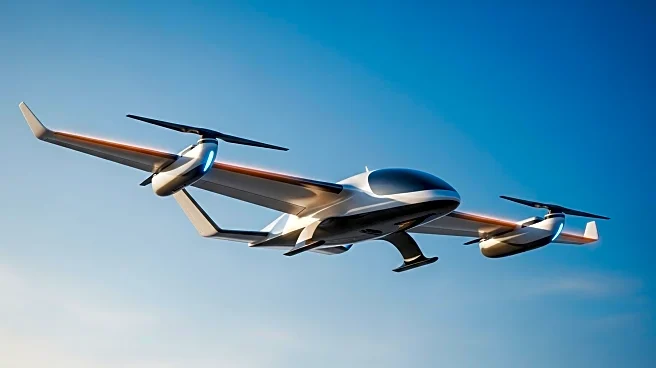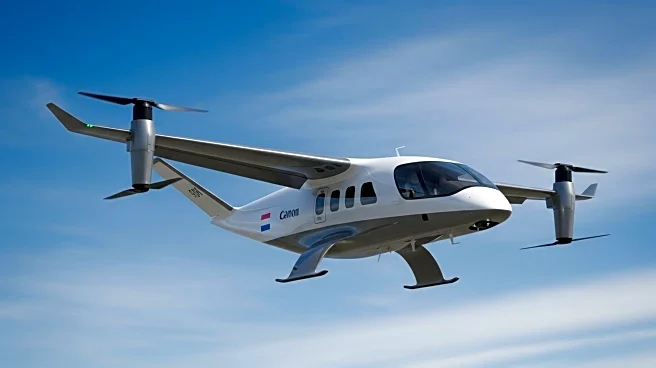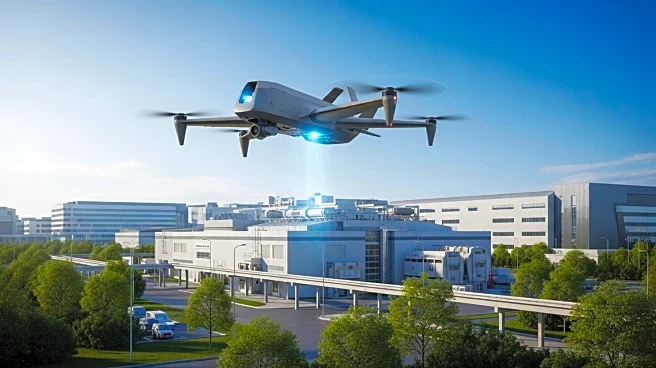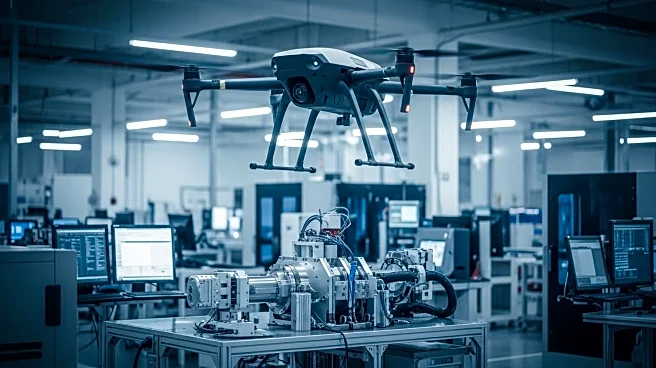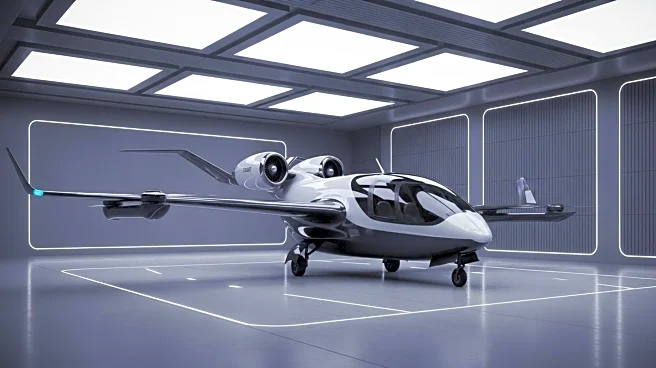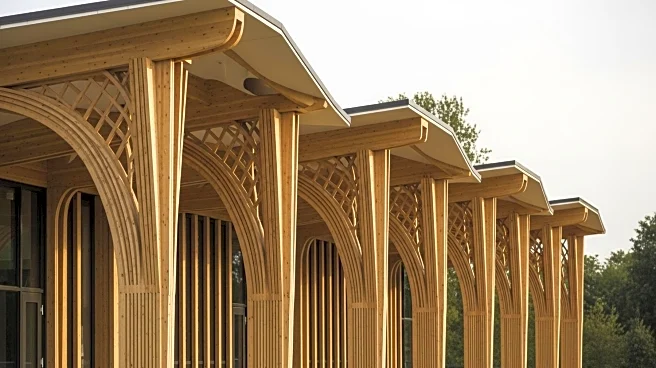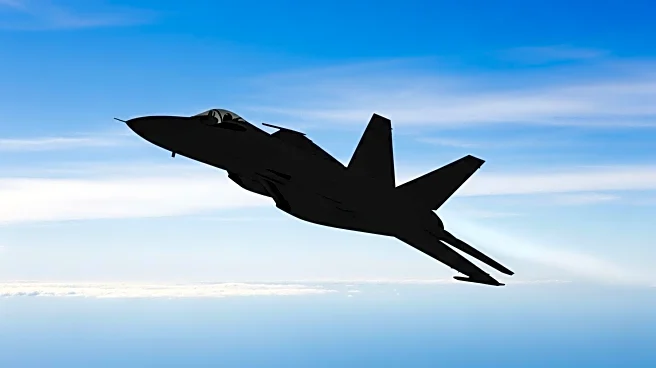What is the story about?
What's Happening?
Vertical Aerospace has successfully completed wing-borne flight tests of its VX4 prototype, marking a significant milestone in its development program. The UK-based company began conventional take-offs and landings in May, accumulating 215 nautical miles in this configuration. The VX4 prototype was flown by test pilots Simon Davies and Paul Stone in both direct and computer-assisted modes, performing as expected based on simulator models. A notable achievement during the trials was an airport-to-airport sortie in July, showcased at the Royal International Air Tattoo at RAF Fairford. The wing-borne flights represent the third phase of Vertical's four-stage test program, with the final phase being the transition between vertical and conventional flight modes. Vertical aims to conduct these transition flights before the end of the year, pending an extension of the VX4's permit to fly by the UK Civil Aviation Authority.
Why It's Important?
The completion of wing-borne testing is a crucial step for Vertical Aerospace as it moves closer to achieving type certification for the VX4 by 2028. This development is significant for the eVTOL industry, which is poised to revolutionize urban air mobility with electric vertical take-off and landing aircraft. Successful transition flights will demonstrate the VX4's capability to switch between vertical and conventional flight modes, a key feature for operational flexibility. The progress made by Vertical Aerospace could influence regulatory frameworks and accelerate the adoption of eVTOL technology, impacting transportation infrastructure and urban planning.
What's Next?
Vertical Aerospace plans to conduct transition flights before the end of the year, contingent upon receiving an extended permit to fly from the UK Civil Aviation Authority. The company is working closely with the CAA and the European Union Aviation Safety Agency to achieve type certification by 2028. As the transition flights approach, stakeholders in the aviation industry, including regulators and potential operators, will be closely monitoring the outcomes. Successful transition flights could lead to increased investment and partnerships, further advancing the eVTOL sector.
AI Generated Content
Do you find this article useful?
